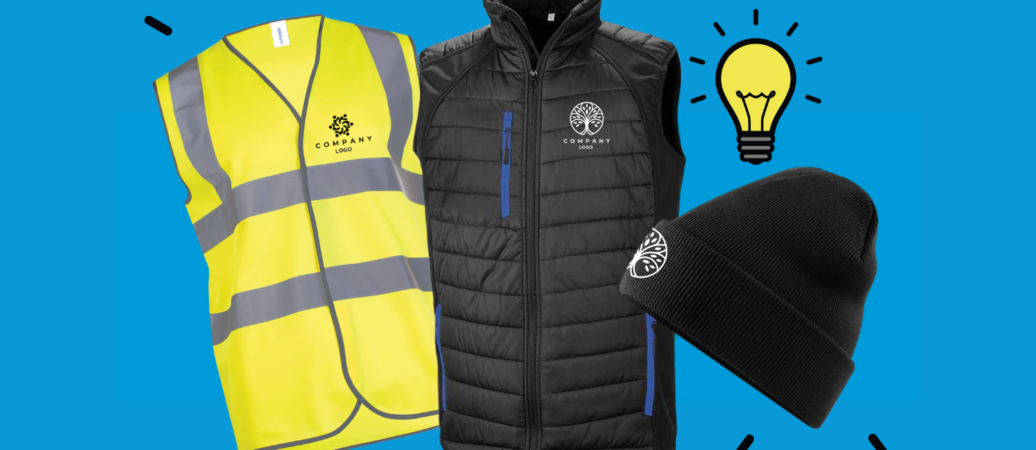The Significance of Sustainable Apparel: Exactly How It Impacts the Atmosphere and Your Wardrobe
Sustainable clothes is increasingly identified for its vital duty in minimizing the ecological effect of the fast garment industry. By focusing on environmentally friendly materials and moral production methods, it addresses pressing ecological concerns. This change not just profits the world yet additionally influences consumer choices, resulting in an extra thoughtful approach to closet administration. Recognizing these dynamics raises necessary concerns regarding style's future and personal responsibility fit it.
The Environmental Impact of Rapid Style

Benefits of Lasting Products
Sustainable products supply considerable benefits, specifically through green material selections that decrease environmental damage. These materials likewise demonstrate resilience and longevity, minimizing the demand for constant substitutes. As a result, they add to an extra sustainable garment industry and promote accountable consumer behavior.
Eco-Friendly Textile Selections
While the fashion sector has long been connected with fast trends and ecological damage, the increase of environmentally friendly textile selections presents a transformative possibility. Lasting materials such as natural cotton, hemp, and Tencel have acquired appeal because of their reduced environmental influence. These materials are commonly created without dangerous chemicals and need much less water, minimizing their carbon impact - Branded Clothing. Additionally, several eco-friendly fabrics are biodegradable, adding to a circular economic situation by lessening waste. Selecting lasting products not only sustains eco liable methods but also promotes much healthier environments. As customers end up being much more knowledgeable about their acquiring power, the need for environmentally friendly textiles encourages brand names to introduce and adopt more sustainable manufacturing approaches, eventually benefiting the earth and future generations
Longevity and Durability Advantages
Numerous customers are progressively acknowledging the sturdiness and longevity benefits of lasting products in their garments options. Unlike conventional materials, sustainable materials such as organic cotton, hemp, and recycled polyester are engineered to endure wear and tear, resulting in garments that last longer. This lowered frequency of substitute not only saves consumers cash in time but likewise decreases waste generated by quick style. Furthermore, lasting garments commonly employs environment-friendly production methods that boost textile toughness, adding to a reduction in the general carbon footprint. By purchasing sturdy apparel, customers can cultivate an extra lasting wardrobe while taking pleasure in top notch items that keep their aesthetic and performance over time. Subsequently, longevity and durability stand as key advantages of picking lasting products.
Lowering Waste Via Lasting Practices
Reducing waste in the apparel industry can be achieved through cutting-edge practices such as upcycling and repurposing products. Additionally, taking on minimal wardrobe techniques encourages consumers to prioritize high quality over amount, inevitably lowering apparel usage. Together, these approaches contribute significantly to a much more lasting apparel model.
Upcycling and Repurposing Materials
Upcycling and repurposing products have actually become cutting-edge strategies in the apparel industry, changing thrown out fabrics right into valuable new items. This strategy not just minimizes waste however likewise motivates imagination and individuality in clothes design. By taking old garments and products, developers can create unique items that mirror personal style while minimizing the demand for new resources. In addition, upcycling commonly calls for much less energy and water compared to traditional manufacturing processes, substantially decreasing the environmental footprint of fashion. As customers become more knowledgeable about sustainability, the popularity of upcycled apparel proceeds to climb, promoting a round economic climate. Eventually, these techniques add to a much more lasting future, where fashion focuses on ecological health and wellness over rapid production and consumption.

Minimalist Closet Strategies
As people increasingly seek to decrease their environmental influence, taking on minimalist wardrobe strategies has actually gained grip as an effective approach to sustainable style. These techniques highlight quality over amount, encouraging customers to curate a smaller collection of functional, durable garments. By concentrating on classic pieces that can be combined and matched, people can minimize the frequency of acquisitions and inevitably reduce waste.Additionally, minimalism promotes mindful usage, urging consumers to assess the honest and environmental implications of their navigate to this site selections. This strategy not only promotes an extra sustainable way of life but likewise streamlines daily decision-making concerning clothing. As people embrace minimal concepts, they add to a style culture that values sustainability and accountable consumerism, ultimately causing a more eco-conscious society.
The Duty of Ethical Labor in Sustainable Fashion
While numerous customers are progressively mindful of the ecological effects of their garments selections, the relevance of honest labor techniques in sustainable fashion can not be neglected. Moral labor encompasses reasonable earnings, safe working conditions, and regard for workers' legal rights, developing the backbone of responsible fashion production. Brand names that focus on honest labor not just uplift areas however additionally set a standard for accountability in the industry.Moreover, the combination of ethical techniques promotes transparency, making it possible for customers to make informed choices about their acquisitions. This method contrasts dramatically with quick style's exploitative labor models, which typically prioritize revenue over people. By sustaining firms devoted to moral labor, customers add to a system that values human dignity alongside environmental sustainability. Honest labor is not just an add-on; it is necessary to the more comprehensive mission of sustainable fashion, ensuring that the quest for eco-friendliness does not come at the expense of human rights.
The Effect of Lasting Garments on Carbon Emissions
Sustainable garments has the potential to significantly minimize carbon discharges associated with the garment industry. Conventional garment production contributes especially to greenhouse gas discharges, largely due to energy-intensive production procedures and the usage of non-renewable resources. In contrast, lasting fashion focuses on environment-friendly materials, such as natural cotton or recycled fibers, which typically need much less power to produce.Moreover, sustainable brands often tend to embrace more reliable production practices, reducing waste and reducing general exhausts. By prioritizing sturdiness and timeless style, sustainable apparel encourages consumers to purchase less regularly, additional lowering the carbon footprint related to overconsumption.Additionally, many lasting brand names are committed to openness in their supply chains, making it possible for consumers to make educated choices that straighten with their values. Eventually, moving towards lasting apparel can result in a substantial reduction in carbon emissions, contributing to a much healthier planet and a more sustainable future for the fashion business.
Sustaining Regional Economic Climates With Sustainable Choices
The shift towards lasting clothes not just addresses ecological issues yet likewise significantly advantages local economic situations. By selecting sustainable style, consumers often support neighborhood artisans and small companies, enhancing area resilience. These business usually operate on a smaller range, prioritizing workmanship and honest techniques over mass production.Investing in locally made lasting garments cultivates job development and stimulates financial development within communities. As customers end up being a lot more familiar with the environmental influence of their acquisitions, they increasingly seek items that reflect their worths. This need motivates regional manufacturers to adopt sustainable practices, adding to a circular economy.Moreover, sustaining local organizations decreases transportation discharges, aligning with eco-conscious consumer habits. The interconnectedness of lasting clothing and regional economies emphasizes the vital role that individual selections play in promoting both financial and ecological health. By cultivating these local links, communities can thrive while also working in the direction of a more lasting future.
Transforming Your Storage Room: Tips for a Lasting Closet
As individuals seek to reduce their ecological impact, transforming a wardrobe right into a lasting wardrobe comes to be an essential step. One efficient method is to assess existing garments, maintaining only things that are put on consistently which line up with sustainability goals. Prioritizing top quality over amount is essential; buying durable pieces from top article eco-friendly brands can significantly decrease waste.Additionally, integrating second-hand products can rejuvenate a closet while minimizing ecological damages. Organizing apparel swaps with friends or contributing extra products can additionally advertise sustainability.When purchasing, individuals should look for products that are natural, recycled, or biodegradable, and avoid quick style sellers - Branded Clothing. Lastly, exercising mindful consumption by attentively taking into consideration each acquisition can add to a much more lasting way of living. By applying these tips, one can develop a wardrobe that shows personal style while supporting environmental stewardship
Regularly Asked Inquiries
How Can I Identify Lasting Garments Brands?
To determine lasting clothing brands, one should investigate Web Site products used, check for certifications like Fair Trade, and analyze the brand name's openness concerning their production processes, labor practices, and ecological impact, guaranteeing ethical and environmentally friendly practices are focused on.
What Are the Prices Linked With Lasting Style?
The costs associated with lasting fashion can differ significantly. Greater manufacturing expenses, ethical sourcing, and environment-friendly products typically lead to increased retail costs, which might deter some consumers while interesting eco conscious consumers.
Can Lasting Apparel Be Elegant and Stylish?
Lasting apparel can undoubtedly be stylish and stylish. Designers increasingly focus on cutting-edge materials and moral production approaches, confirming that fashion and sustainability can coexist. Customers currently have varied alternatives that blend aesthetic appeals with ecological consciousness.
Exactly How Does Laundering Garments Affect Their Sustainability?
Cleaning clothes considerably impacts sustainability by consuming water and power, adding to pollution, and causing microplastic launch. Frequent cleaning can deteriorate textiles, reducing their life expectancy and increasing the need for replacements, inevitably aggravating environmental problems.
What Is the Lifespan of Lasting Clothes Compared to Rapid Style?
The life-span of lasting garments usually surpasses that of fast fashion products, commonly lasting a number of years due to top quality materials and craftsmanship. In contrast, fast fashion garments may break down quickly, necessitating more regular replacements. Lasting apparel is increasingly identified for its essential function in reducing the ecological effect of the rapid style sector. While several consumers are progressively conscious of the environmental consequences of their clothing selections, the relevance of honest labor practices in sustainable fashion can not be overlooked. Branded Clothing. Sustainable clothing has the possible to substantially lower carbon discharges connected with the style industry. In comparison, sustainable style concentrates on green products, such as organic cotton or recycled fibers, which usually call for less energy to produce.Moreover, lasting brands tend to take on more reliable production methods, minimizing waste and decreasing overall exhausts. By focusing on longevity and timeless design, lasting clothes motivates consumers to get much less often, more reducing the carbon footprint associated with overconsumption.Additionally, many sustainable brands are dedicated to transparency in their supply chains, allowing customers to make educated options that align with their values